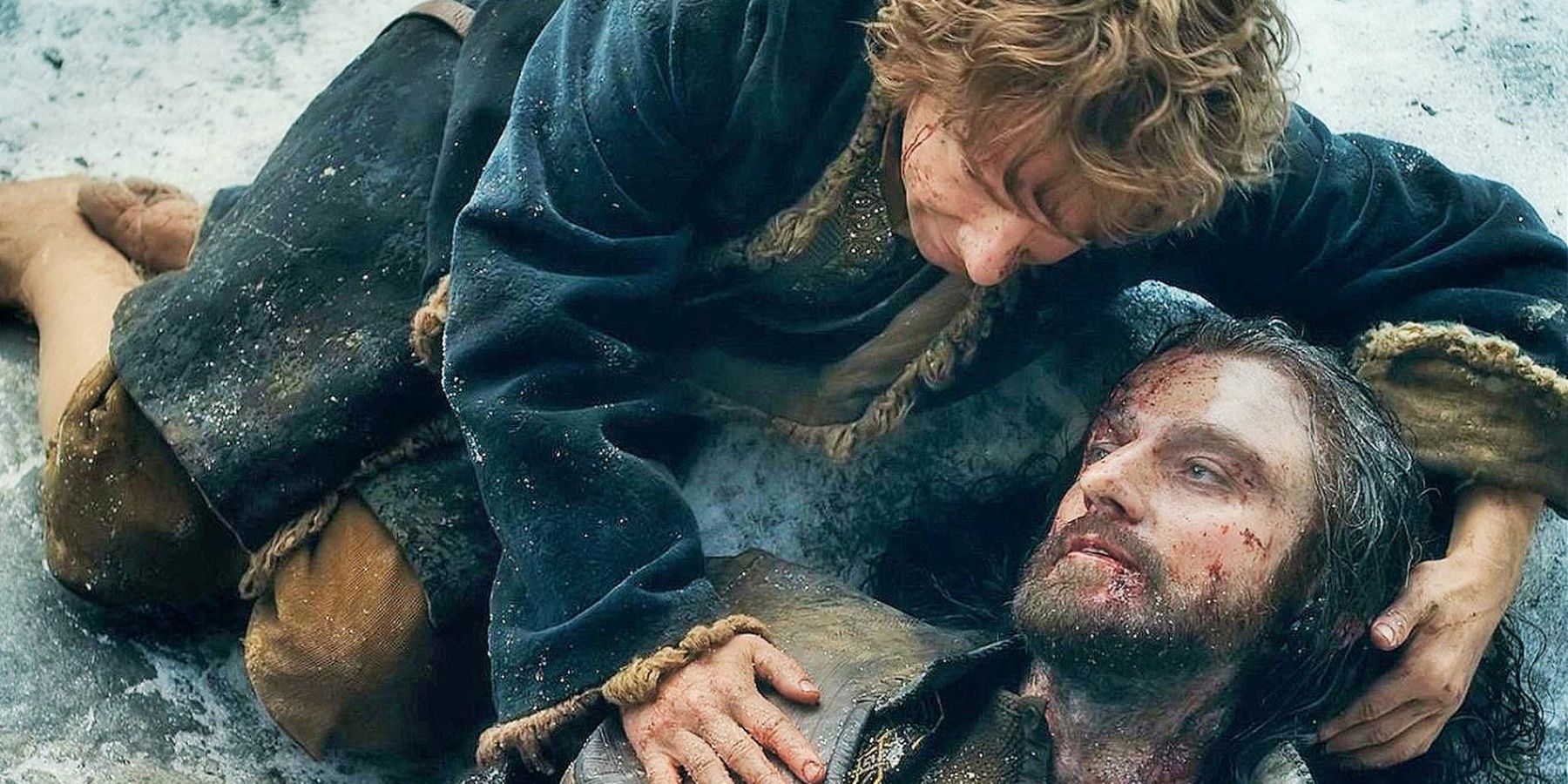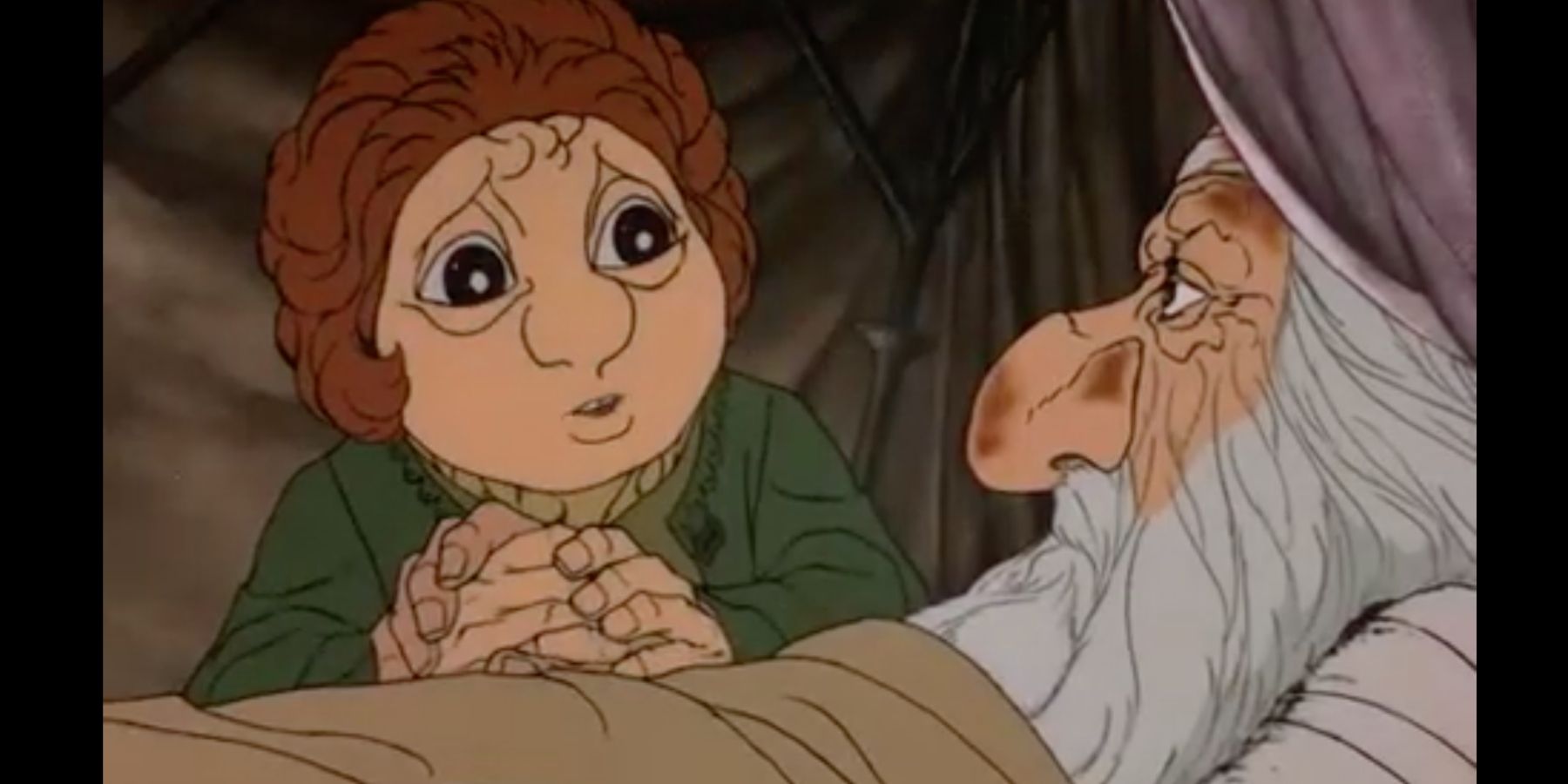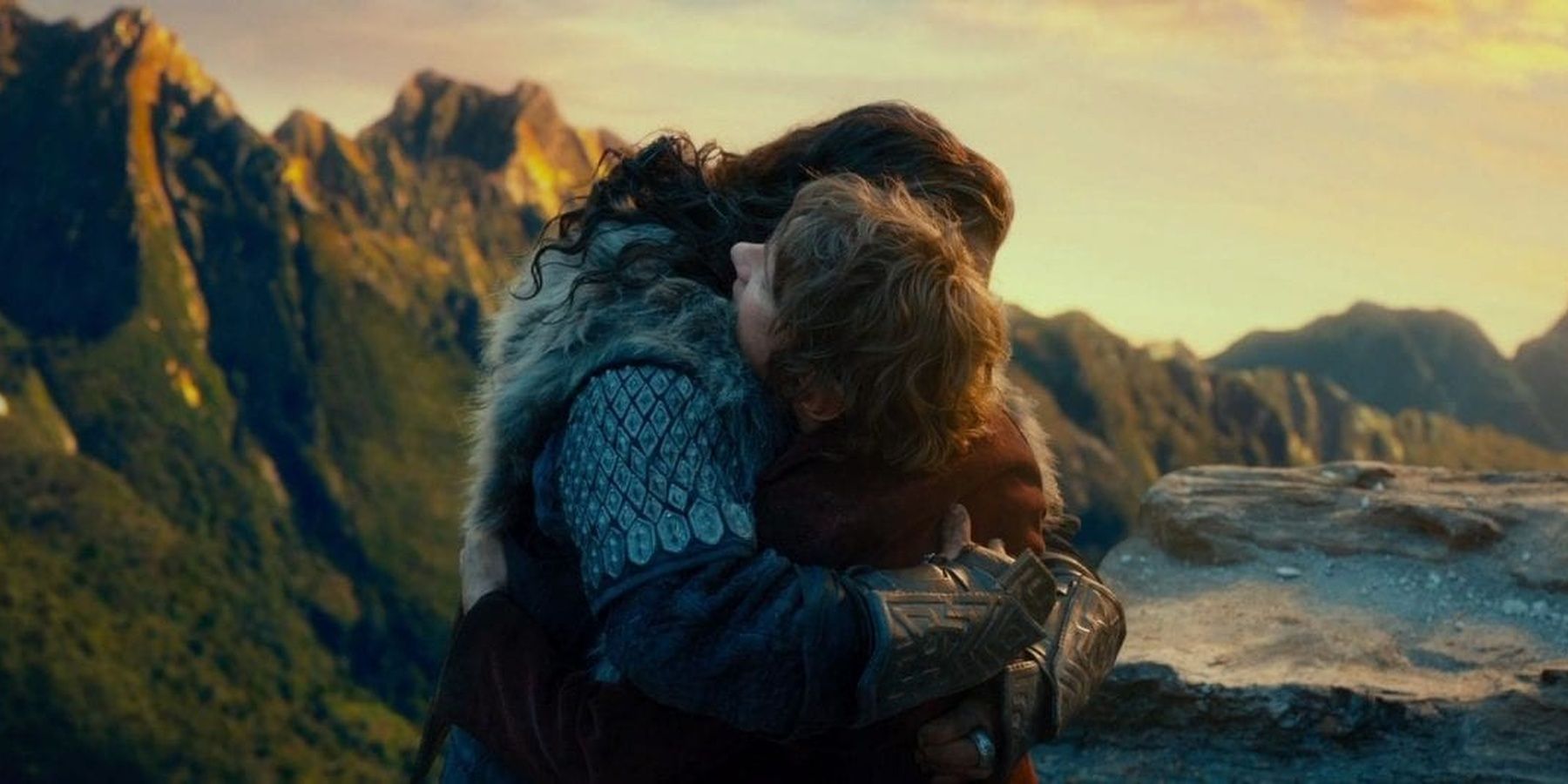When it comes to adapting a beloved book to the big screen, changes often have to be made to make the story work in a totally different medium. This is especially true when one (fairly small) book is being turned into three movies that are each nearly three hours long, as was the case with the movies adapted from The Hobbit. In order to stretch the story into three installments, a lot of changes had to be made, which makes watching the films a very different experience than reading the original novel.
One of the big scenes that changes from book to movie is the circumstances surrounding Thorin Oakenshield's death. It's a big moment in both, as Thorin is one of the main characters and his ultimate demise is a very somber moment for the characters and the reader. But there are really interesting things about the different ways that his death scene is presented in the book versus the movie. What purpose was each attempting to serve, and was there one representation of the scene that was more successful than the other?
In the book, Bilbo is knocked unconscious during the Battle of the Five Armies, and when he comes to, the fighting is over. He is taken to Thorin's tent, where he discovers that the Dwarf is on his deathbed after being mortally wounded in battle. It seems he had been waiting for Bilbo to come, as he draws his final breath as soon as they are able to say goodbye to each other. Thorin apologizes for the things he said to Bilbo when he was under the dragon sickness, and Bilbo assures him that he is grateful to have been asked on this adventure of a lifetime. Thorin has the now-iconic line, "If more of us valued food and cheer and song above hoarded gold, it would be a merrier world", which is his way of telling Bilbo that he now understands why the hobbits value the things they do.
With this, Thorin finally dies and Bilbo mourns and weeps for him. The scene is touching, albeit short, and the writing style presents it in a sort of matter-of-fact way that doesn't fully convey the emotions you would expect the characters to be feeling after all they've been through together. This isn't to knock Tolkien's writing, of course, but as The Hobbit was originally written as a children's book, it makes sense that the scene wouldn't be overly upsetting. Thorin seems at peace with his death, and Bilbo, though he is sad about it, seems to accept his friend's passing now that they have had these final moments together.
The movie, however, plays into the emotion of the scene much more, which makes it more compelling. Of course, the scene would naturally be sadder in the film because the audience has spent more time with the characters, and are now watching Thorin die in front of their eyes rather than just reading the words. In the film version, the scene does not take place long after the battle has finished, but right at the end of it instead. Thorin has not had the time to be moved to a tent to rest in bed, and is simply lying on the ground, slowly dying from his injuries.
Bilbo finds him, and they have a very touching exchange that is similar in structure to their final conversation in the books. Thorin apologizes for the way he acted and says he wants to part from Bilbo in friendship, and Bilbo (at first seemingly in denial about the gravity of Thorin's wounds - or perhaps just putting on a good face for his friend) tells him that he's glad to have shared in Thorin's journey. This scene plays up their friendship and the deep connection they've formed through their adventure, which makes it feel much more emotional. When Thorin dies, Bilbo is visibly upset, and Martin Freeman gives a fantastic performance of grief that feels absolutely gut-wrenching.
In general, one thing that helps the scene in the movie feel more emotional than the book is the performances from Martin Freeman as Bilbo and Richard Armitage as Thorin. They add so much emotion and depth to their characters that are less obviously present in the books, and it makes Thorin's death feel like much more of a loss. He's spent the movie being consumed by greed, and to see him finally learn the error of his ways and apologize to his friend only to die immediately afterward is incredibly tragic, and the audience feels for Bilbo's pain and also feels the sadness of it themselves.
Both versions of the death scene provide an emotional conclusion to a beloved character's story, but the movie version is able to tap into the pathos a little more. Because the audience has been following the characters for 3 movies, it's easier to get attached to them. While Thorin's death in the book is still sad, and the fact that he stalled his death until he could say goodbye to Bilbo is poetic in a way, there's something about watching the scene from the movie play out in front of your eyes that makes it much more affecting. Thorin and Bilbo's fraught relationship - and ultimately, friendship - is at its full power in the scene, and it wonderfully and tragically caps off a truly epic story.



